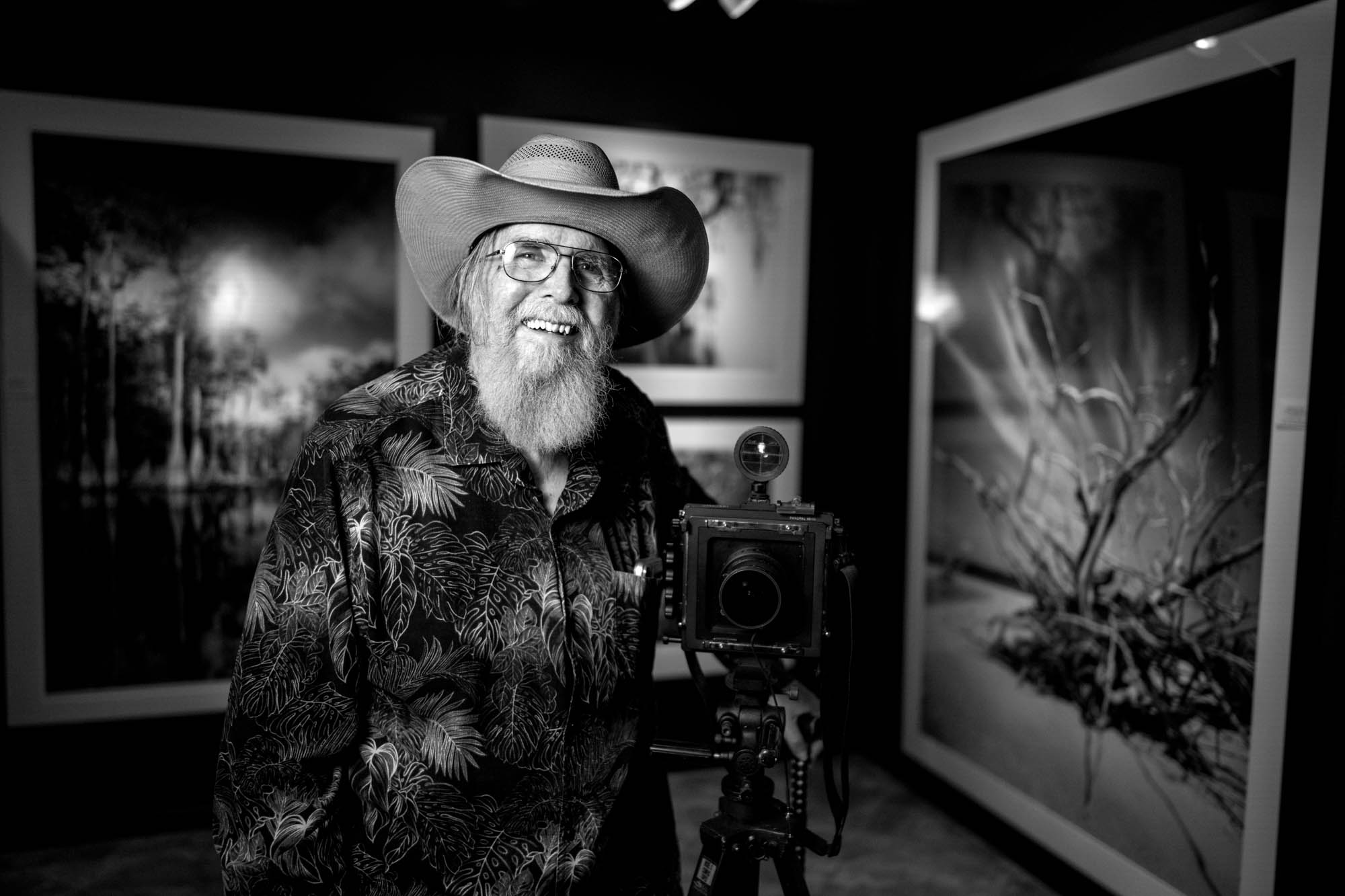“What’s the most important part of nature?” asks Clyde Butcher. The legendary large-format photographer, now 82-years-old, is sitting in the middle of his Venice studio and gallery, surrounded by the black and white landscape photography that has defined his career. “You have to realize that nature needs to work in chaos. It is all of the same importance—the sky, the trees, the grass, the water—there is a oneness of it all. Color photography separates the picture into different parts. Black and white gives you oneness.”
For those who might not know Butcher’s name, there is a higher likelihood that they have seen his work. In the pantheon of American landscape photographers, Butcher’s name stands alone, on a similar echelon to that of Ansel Adams. He is best known for his black and white landscape photography of Florida’s interior, dramatic, sweeping images from the Everglades and Big Cypress National Preserve that have earned him international acclaim and spearheaded conservation efforts in the area. Butcher is regarded as a pioneer in his craft, having built out custom darkroom and printing equipment to create the largest, highest resolution prints possible. He hopes that by doing so the viewer will want to “walk into” his images.
Butcher is also an artist who has gone through shifts throughout his career. There was a shift from black and white to color film in the early 1970s, which took his burgeoning landscape photography business to new heights. There was a shift from California to Florida, where he moved with his family in the late ‘70s after selling the business. Then the biggest shift of all came in 1986, when his son Ted was killed by a drunk driver, after which Butcher eschewed color film entirely and retreated into the primordial swamps of the Big Cypress National Preserve, where he would begin to create the work that has defined his legacy.
“There are not many places in the world that are very primeval,” says Butcher. “I try to find places that are primitive, that have not been touched and replanted. In the Everglades it looks like a dinosaur might come from around the bend.”
Butcher is now in the midst of another shift. After a decade of working with digital cameras, he is now transitioning back to working in large format film, this time with a new camera. The camera, an Alvandi Camera Systems Panoral 45 Ver. III, is a 4 x 5 inch large format camera with tilt and shift capabilities that essentially allows Butcher to do everything that he typically would with a 4 x 5 or even larger format camera, but in a tighter, more streamlined package. It’s essential for the continuation of his artistry—after battling health scares, including a stroke, Butcher walks with the aid of a walker. Even still, he keeps going out into the wilderness, oftentimes in Myakka State Park, searching for that feeling he gets when he knows that he’s found a shot he likes.
“People say that I’ve taken a walker where no man has taken a walker before,” chuckles Butcher. “I’ll sit on the walker in two feet of water—it’s actually worked out nicely, because it’s a lot easier to sit for two to three hours at a time than it is to stand. I think I’ve been taking more pictures with the walker than I did before and it’s been pretty exciting getting back into film.”
Although he’s done it from time to time, Butcher seldom goes into nature searching for a specific shot. Instead he’s ingesting the world around him, the rustling of the pines, the gentle lapping of the water around his walker. He’s searching for a feeling, a moment of truth privy only to him, captured through the lens of his camera, one sheet of film at a time.









